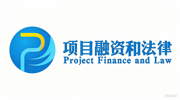Suspension of American aid: AES and DRC first affected in French-speaking Africa
On January 27, Donald Trump froze American foreign aid for three months. More than $68 billion in 2023. This measure makes the continuation of thousands of NGO programs, on which millions of beneficiaries depend, particularly in Africa, very uncertain.
Published on:Modified on:

After Europe, sub-Saharan Africa benefited from the strongest American support in 2023. Aid that mainly went through the USAID agency (more than 40 billion dollars), which Donald Trump, President of the United States, suspended on January 27 for at least three months, the time to carry out an audit. More than 15 billion dollars in total, according to the official website of the American government.
North Africa is included with the Middle East. In this region, Egypt and Israel are exempt from the freeze. In total, these two latter states received nearly 5 billion dollars, mainly in the security sector.

At the top of the recipient countries south of the Sahara, the countries of English-speaking East Africa. Ethiopia and Somalia together received more than 2.5 billion dollars. Kenya, Uganda, Tanzania… These countries each received several hundred million dollars. An effort that goes primarily to humanitarian aid and health. An expert from a development bank questions the continuity of programs related to family planning, the fight against HIV-AIDS or programs concerning the defense of human rights or LGBT populations. In fact, in this region where governments are for the most part not inclined to support these sectors, budget cuts in these areas would be hard felt, underlines this same expert.

The DRC is the leading French-speaking country receiving American foreign aid, with nearly a billion dollars, half of which is devoted to humanitarian aid. In this area, there are emergency food aid programs, with support for the World Food Program, for example, programs to fight malaria or HIV-AIDS. With a budget of more than 17 billion dollars in 2025, and “ with the humanitarian crisis in the East, the government will need this aid ,” estimates Jacques Mukena, governance and economics specialist at the Congolese Ebuteli Institute. At the end of January, nearly a million people had been forcibly displaced due to the conflict in the Goma region.

Another region in Africa that will also be affected by budget cuts if the aid suspension is confirmed: the Alliance of Sahel States. Mali, Burkina Faso and Niger benefit from US support of more than $700 million. This support, when compared to their economies, represents a valuable source of financing. “ These countries are currently having difficulty mobilizing funds. International funding has dried up due to the sanctions imposed on them,” says Ibrahim Adamou Louché, an independent Nigerien economist. “Added to this are also difficulties in mobilizing internal resources, particularly taxes, due to the local context. The fact that they are deprived of this funding risks compromising many development projects. ”
Here again, humanitarian operations are the most funded ($263.6 million), followed by health and economic development programs. In these states, defense and security are often prioritized. For example, more than 27% of Burkina Faso’s 2025 budget is dedicated to security issues. In this context, American aid is turning to less-endowed sectors such as health or agriculture. The freeze on this aid will directly affect programs that are supposed to “ in a way help populations escape poverty ,” emphasizes Ibrahim Adamou Louché.

Thousands of kilometers from Paris and Washington, workers on the ground are forced to sort out their priorities and actions. This is the case in the Cabo Delgado region of Mozambique where SI operates. “Today, with what we have understood from the instructions given by the American donor, programs relating to emergency access to water can be continued. On the other hand, everything relating to agricultural recovery, therefore the possibility for these people to have access to seeds, to develop subsistence agriculture around the camp in which they have gathered, all these projects must be stopped ,” explains Kevin Goldberg. The NGO must make choices: “ This leads us to take back all of our budgets, to make sometimes very painful decisions by separating from part of our teams in certain countries who work on activities not covered by the exemptions. ” And the situation is even more difficult for small organizations that depend exclusively or almost exclusively on American funding and who find themselves without an alternative. “ This aid supports people who are facing major crises and who cannot cope without this help ,” he warns.
Most foreign aid, more than 60%, is managed by the American agency USAID, which redistributes it via partner programs and organizations. A strategic agency that Elon Musk, appointed head of the new American Department of Government Effectiveness (DOGE), described as a “ criminal organization .” It is “ time for it to die, ” he insisted. Website suspended, employee access restricted, the promise of vast cuts in the American budget was quick to materialize. “ The United States certainly considers a return on investment when it provides aid, but in terms of development aid, the objective is not to have an immediate return ,” warns Fabrice Ferrier, director of Focus 2030, an association supporting international solidarity actors.
” This is short-sighted thinking ,” says one of our sources, who points out that a number of American companies make a living from the markets offered by USAID. The search for new funding and the reorganization of budget lines have already begun in the organizations. A task that does not look easy in a world where there are already few donors and where the trend is towards reducing budgets devoted to public development aid.






